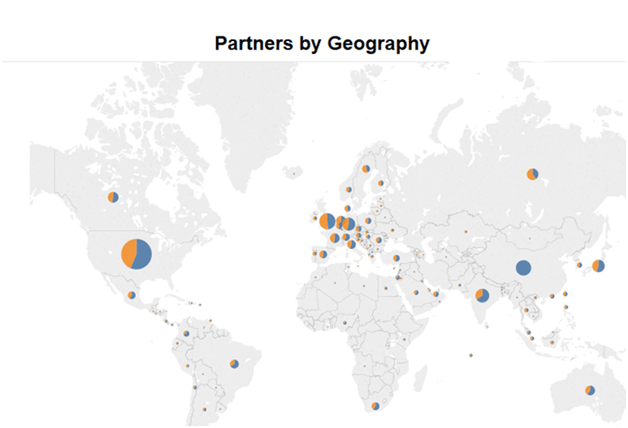- Strategy consultancy needed help to develop recommendations, in order to improve a Top 5 software client's cloud partnership strategy
- DSS used data interpretation and visualization development to determine patterns and actionable insights
The Situation
A sales strategy consultancy was hired by a Top 5 Software Company to help them drive revenue. The consultancy's business was to helps companies acquire, grow, and retain customers. Their client, a prominent software company (top 5 in the world), required help with its cloud strategy, specifically in growing its partnership base.
The Problem
The software firm relied heavily on partners to sell their software and services, and wanted to better utilize data analysis to drive future recommendations. Unfortunately, just like many organizations their size, most of their data was in disparate databases, including financial systems, CRM, and proprietary databases. Additionally, it had been years since they had cleaned their databases - which meant that there were fields without apparent meaning, invalid data values, and no data dictionary.
Despite these challenges, the sales strategy consultancy was tasked with conducting exploratory analysis on the partnership data, create interactive visualizations to help the client explore their challenges, and to use data to create recommendations. This consultancy employed DSS to help it analyze and make sense of the data.
The Solution
In order to organize the messy data, and to employ it and develop actionable sales recommendations, DSS was contracted to do the following:
- Normalize data, consolidating data sets from multiple sources, and producing a single mineable data set.
- Conduct exploratory analysis on partnership / revenue information, to determine initial patterns. These patterns would be used to guide deeper statistical analysis.
- Develop interactive visualizations, which would help the client explore the challenges or opportunities in the cloud market.
- Create sales recommendations based on the outcome of deep statistical research techniques.
The Outcome
DSS was able to create recommendations, including the following insights:
- Histograms showed that almost 90% of the partnership base had 5 or less accounts. Since even small partners are expected to have far more than 5 accounts, this means that there was considerable opportunity focusing on further penetrating these accounts.
- Only a few partners have a significant number of customers. Interestingly, the majority of partners account for only a small amount of revenue activity. There were fewer than expected “medium” partners – most partners were either very small and very large.
- Although most sales territories saw a 50/50 split on their partnership model type (either direct or indirect), one Asian country was found to have an almost 100% distribution of indirect partners. The corporate headquarters was unaware of this dichotomy, and further investigation determined that the laws of the nation required a slight adjustment of their partnership model there.

